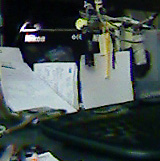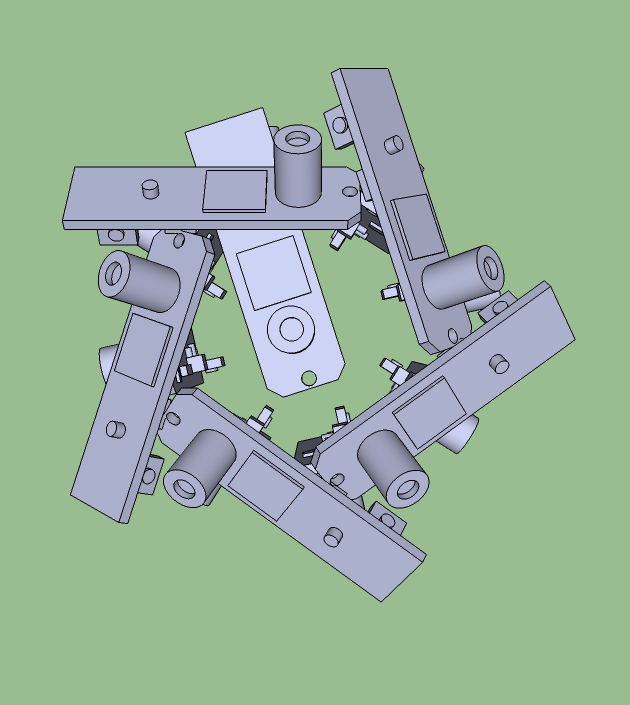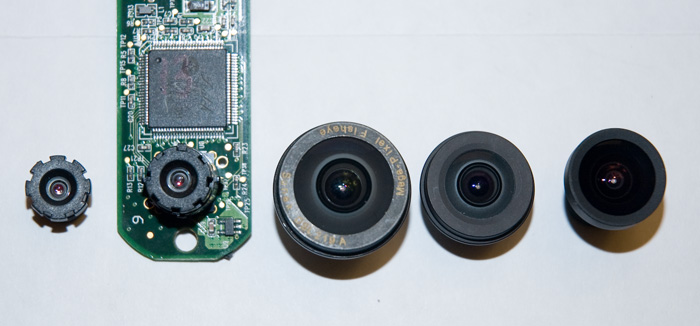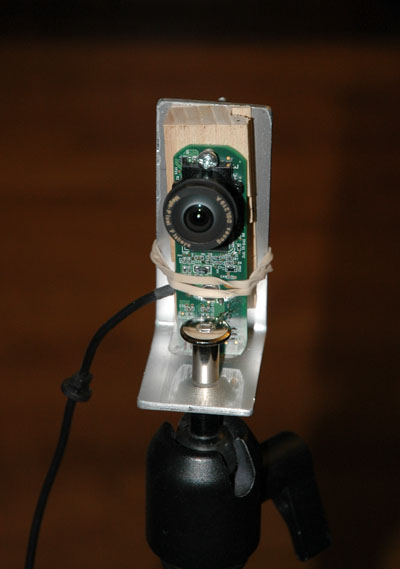




































| Lens | cost | Field of view | Cameras around | Max Dimensions | image | Chromatic Distortion | Chromatic Aberration | detail | comment | |
| IWLAL 120 | $24 | 110° x 83° | 5 | 4200 X 2100 | Panorama |
 |
 |
 |
 |
|
| DSL219A | $49 | 148° x 111° | 4 | 3108 X 1554 | Panorama |
 |
 |
 |
 |
The lens test has a second ghost image. |
| DSL209A | $99 | 160° x 120 | 4 | 2884 X 1442 | Panorama |
 |
 |
 |
 |

|
I Used 1 1/2 inch PVC pipe. Cut section of pipe off square using a miter box. |

|
wrap a piece of paper around and mark the circumference on it. |

|
Use a ruler to mark 5 points, evenly spaced allow the circumferences. |

|
Transfer the marks to the tube. |


|
Drill holes into the pipe to attach the cameras so they will weave one behind the other in a circle. The cameras will be interwoven to attempt to be as close together as possible. |

|
Use a soldering iron to remove the old mounts and glue down the new mounts. The mounts have been grind down to the least amount of plastic. The left and right edge are slanted to accommodate the curvature of the pipe. |
  
  
|
|
|
This is what it looks like after drilling out the holes for the lenses and microphone and adding the cameras. A quarter and dime coin to
show size. To get the cameras into the pipe it required grinding down the
sides of the circuit board some. Electric tape is required to cover the circuit
board to prevent short circuiting on of the cameras. Not sure where the NPP is on the lens exactly, but the distance between NPP of the lenses would be about 1 1/4 inches or 3 cm. With a subject 1 meter away and a 2000 pixel wide pano, the parallax error will be about 11 pixels. If I did my math right, see Parallax. |
|

|
There were two gaps in between cameras. The cameras were packed too tight into the the pipe that it was impossible to adjust them any to remove the gaps. |

|
On the tripod with the six cables going down the far side. The top and bottom caps will be replaced. The blue one on top is too soft and the camera moves around some. The bottom one was from a previous experiment. |

|
There are also 5 holes to capture 5 point sound.
Not sure where the NPP is on the lens exactly, but the distance between NPP of the lenses would be about 2 inches or 5 cm. With a subject 1 meter away and a 2000 pixel wide pano, the parallax error will be about 19 pixels. If I did my math right, see Parallax. I calculated 11 pixels for the 1 1/2" pipe. |

|
Denis with the panorama web-cam setup. Tested with all six cameras going to one USB hub and connected to a laptop. The laptop power was enough to power the hub and five of the cameras, but not enough to power all six cameras. To power all six cameras the hub must be powered. To maintain 15 fps while having all 6 cameras connected to a single hub we were limited to 640X480 resolution. Good thing the ceiling is covered with stucco. It was very hard to see the holes more than a foot away and very easy to fill in with a little plaster. |
Poker video 2000X1000 pixels 13 min, 179 MB |
We ran into so many problems processing the footage trying to get smooth video, that this project was forgotten for 6 years. In those years the source footage has gone missing and all that remained was a couple test stitchings. There were huge color and exposure differences between the cameras. The downward facing camera had such high contrast that you can not read any of the cards. Electric interference caused a periodic tic in the sound recording. Download and watch the video interactivly using VRPlayer. Watch on a monitor and control with a mouse or on a head mounted display HMD like the Rift. |
|
Page last modified Aug 29, 2014 |